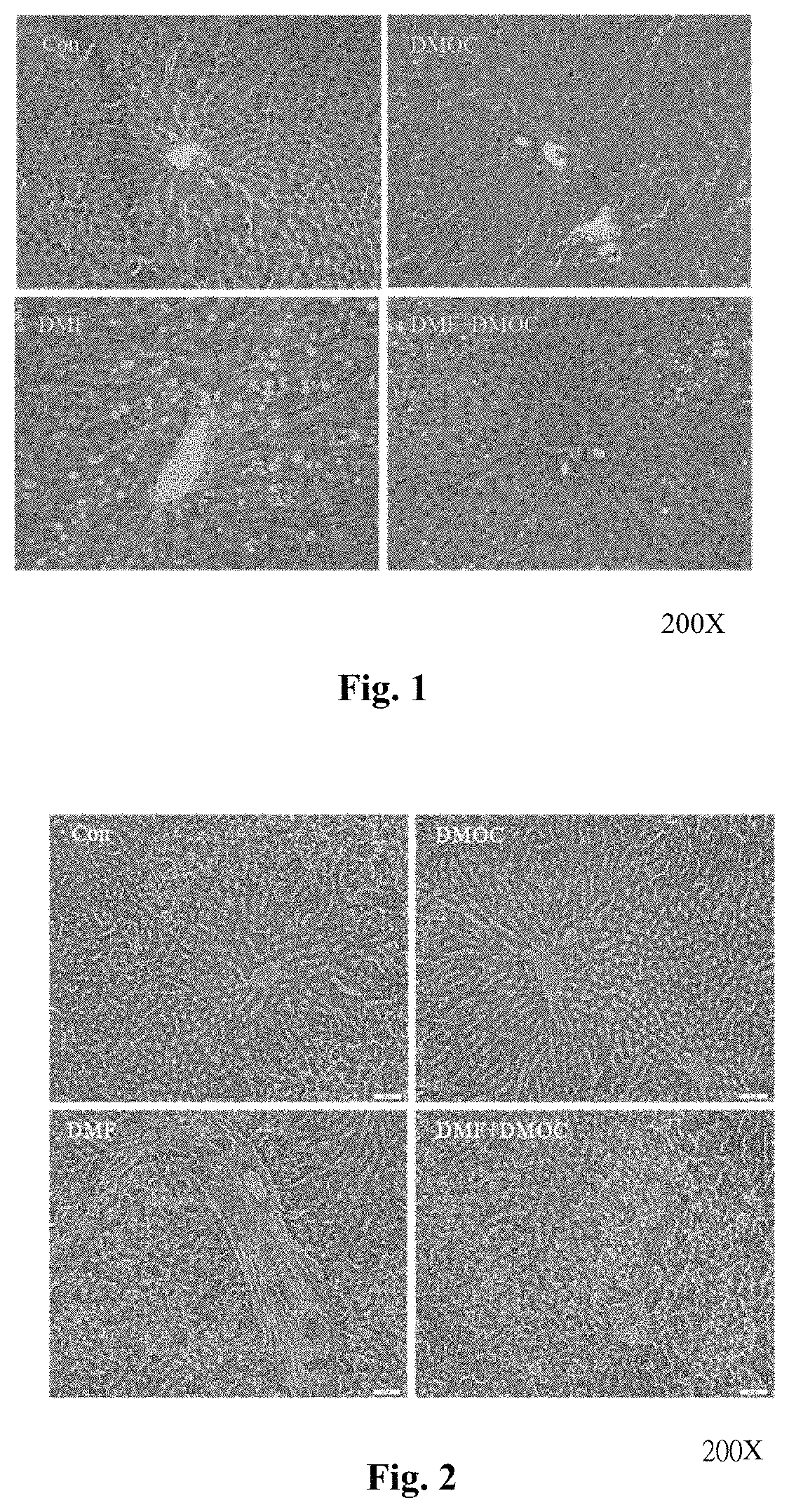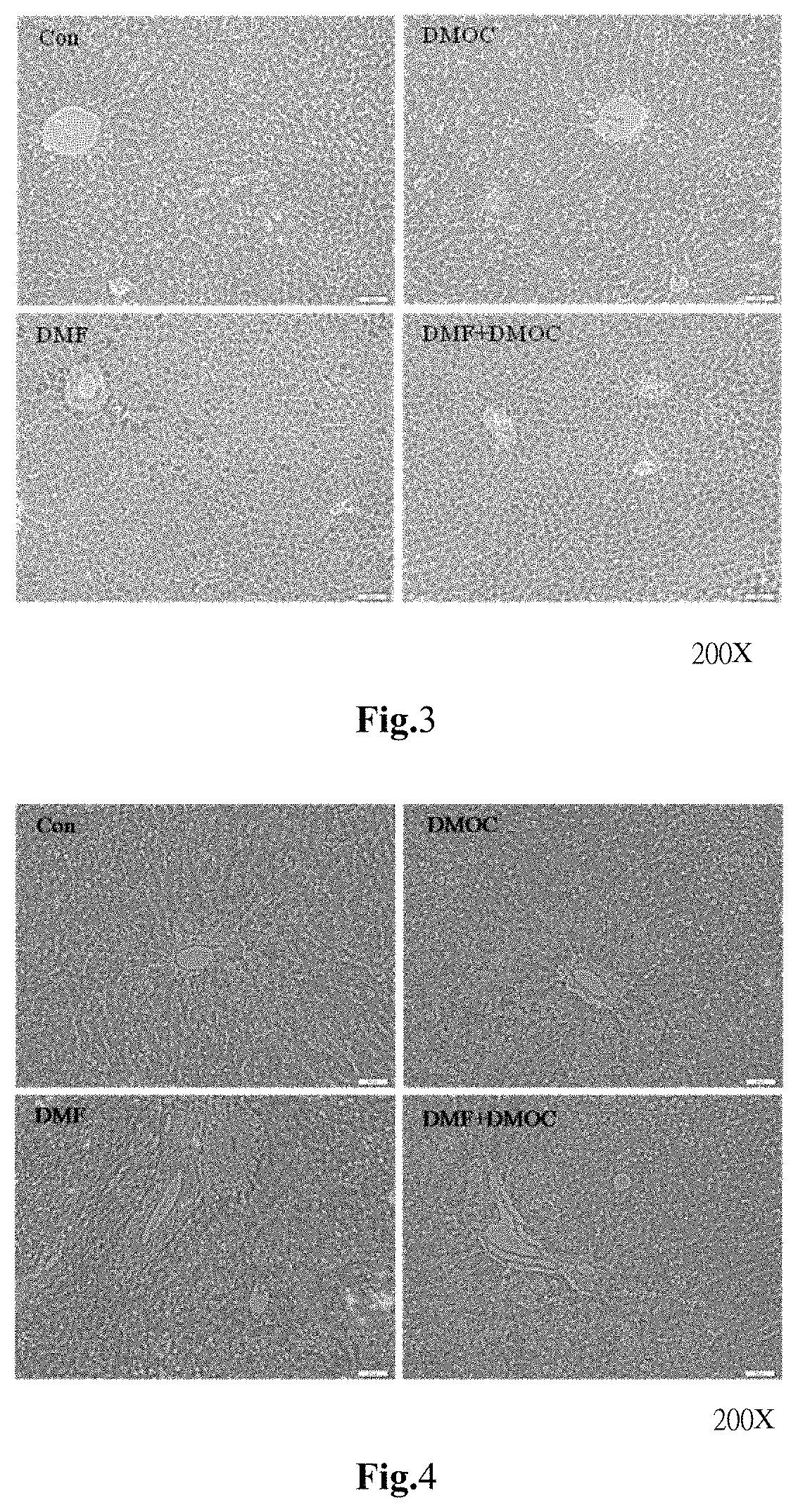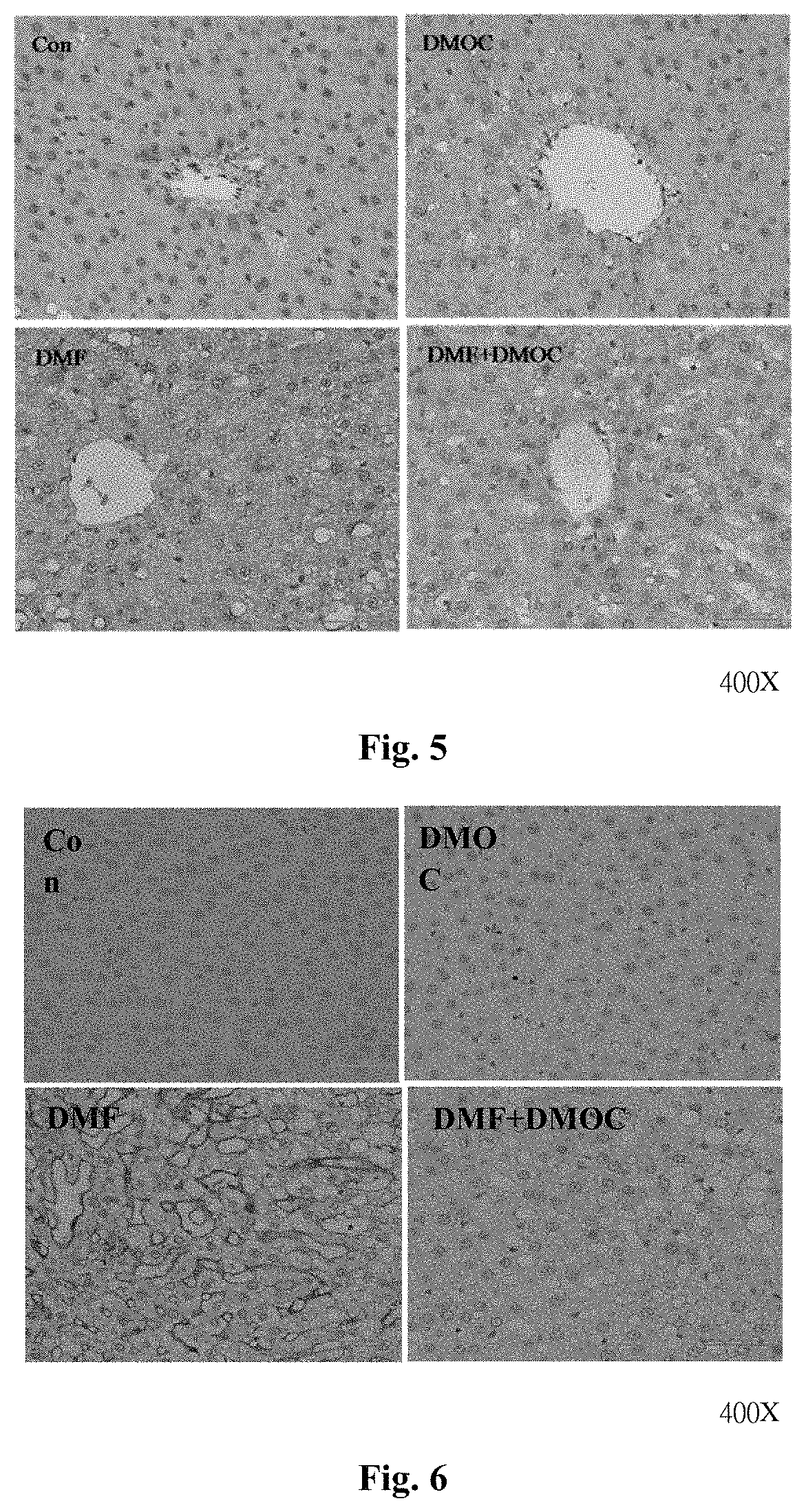Herbal compound extract to moderate diabetes with liver necrosis and fibrosis and use thereof
a compound extract and liver necrosis technology, applied in the field of herbal compound extracts, can solve the problems of triggering liver fibrosis, inflammatory cell infiltration and cytotoxicity, and moderate degeneration, and achieve the effect of moderate body weight and moderate foamy degeneration
- Summary
- Abstract
- Description
- Claims
- Application Information
AI Technical Summary
Benefits of technology
Problems solved by technology
Method used
Image
Examples
embodiment 1
and Administration of the DMOC-Based Herbal Compound Extract
[0044]The 130 g dried and pulverized DMOC-based herbal compound comprising 10 to 20 units rhizome of Dendrobium nobile Lindl, 6 to 12 units fruiting body of Antrodia camphorata, 12 to 20 units root of Panax ginseng C. A. Mey, 10 to 30 units of root of Rehmannia glutinosa Libosch, 15 to 30 units fruit of Salvia miltiorrhiza Bge., 6 to 12 units all of Pheretima asperfillm (E. Perrier), 10 to 30 units root of Pueraria mirifica, 8 to 15 units fruit of Schisandra chinensis (Turcz.) Baill. and 6 to 8 units rhizome of Glycyrrhiza uralensis Fisch as well as 80% ethyl alcohol by weight (i.e., relative unit numbers of a unit weight) were mixed with each other uniformly based on the ratio of 1:15 for extraction by ultrasonic oscillation at 65° C. in the next two hours; the liquid therefrom was filtered out and placed in a rotary heater for volatilization of ethyl alcohol and concentration of alcoholic solutions, and then processed for...
embodiment 2
h Liver Necrosis and Fibrosis Moderated by DMOC
Changes in Rats' Appearances
[0061]The success rates of modeling for Groups ① & ② (normal control groups) and Groups ③ & ④ (induced groups), in which no rat died, were 100% during the tests. The rats in normal control groups displayed good conditions as follows: good appetite and water intake, moderate urine output, body weight increasing steadily, agility, lustrous fur and granular feces. In contrast, the rats in the induced groups fed with calorie-rich HFSD which made a difference to the total food intake displayed as follows: poor appetite, moderate water intake, more urine output, stable body weight (in first two months), soaring body weight (from Month 3), dispirited status, drowsiness, lackluster hair and loose stool.
Changes of Body Weight in Rats
[0062]The changes of body weight in rats interfered by DMOC are shown in Table 2. There was no significant difference in body weight of rats between “Con” and “DMOC” (P>0.05). Before inter...
embodiment 3
athology Checked with the Hematoxylin Eosin Stain (HE Stain) Assay
[0081]For checks of colors and textures of liver tissues, the 2 mm-thick liver tissues cut along the left lateral lobe, the quadrate lobe and the right lobe of a rat's liver should be fixed in 10% neutral buffered formalin, dehydrated, hyalinized, wax-impregnated and embedded for collections of 4 μm-thick sections cut from those liver tissues. The liver tissues collected from rats' same locations were placed in cryogenic vials immediately and stored in liquid nitrogen for quick freezing.
[0082]The hematoxylin eosin (HE) stain is common in staining for histopathology. Because stains with distinct structures display various binding degrees, basophilic hematoxylin and acidophilic eosin are dyed bluish violet and pink, respective. The HE stain is used to distinguish cell nuclei from cytoplasm of a tissue in experimental steps as follows:[0083](1) Fixing: The left lateral lobe, the quadrate lobe and the right lobe on a sacr...
PUM
 Login to View More
Login to View More Abstract
Description
Claims
Application Information
 Login to View More
Login to View More - R&D
- Intellectual Property
- Life Sciences
- Materials
- Tech Scout
- Unparalleled Data Quality
- Higher Quality Content
- 60% Fewer Hallucinations
Browse by: Latest US Patents, China's latest patents, Technical Efficacy Thesaurus, Application Domain, Technology Topic, Popular Technical Reports.
© 2025 PatSnap. All rights reserved.Legal|Privacy policy|Modern Slavery Act Transparency Statement|Sitemap|About US| Contact US: help@patsnap.com



